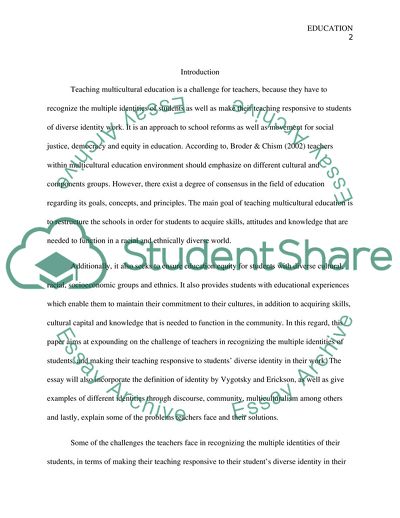Cite this document
(The Main Goal of Teaching Multicultural Education Case Study Example | Topics and Well Written Essays - 1750 words, n.d.)
The Main Goal of Teaching Multicultural Education Case Study Example | Topics and Well Written Essays - 1750 words. https://studentshare.org/education/1759160-the-challenge-for-teachers-is-to-recognise-the-multiple-identities-of-students-and-make-their-teaching-responsive-to-students-diverse-identity-work
The Main Goal of Teaching Multicultural Education Case Study Example | Topics and Well Written Essays - 1750 words. https://studentshare.org/education/1759160-the-challenge-for-teachers-is-to-recognise-the-multiple-identities-of-students-and-make-their-teaching-responsive-to-students-diverse-identity-work
(The Main Goal of Teaching Multicultural Education Case Study Example | Topics and Well Written Essays - 1750 Words)
The Main Goal of Teaching Multicultural Education Case Study Example | Topics and Well Written Essays - 1750 Words. https://studentshare.org/education/1759160-the-challenge-for-teachers-is-to-recognise-the-multiple-identities-of-students-and-make-their-teaching-responsive-to-students-diverse-identity-work.
The Main Goal of Teaching Multicultural Education Case Study Example | Topics and Well Written Essays - 1750 Words. https://studentshare.org/education/1759160-the-challenge-for-teachers-is-to-recognise-the-multiple-identities-of-students-and-make-their-teaching-responsive-to-students-diverse-identity-work.
“The Main Goal of Teaching Multicultural Education Case Study Example | Topics and Well Written Essays - 1750 Words”. https://studentshare.org/education/1759160-the-challenge-for-teachers-is-to-recognise-the-multiple-identities-of-students-and-make-their-teaching-responsive-to-students-diverse-identity-work.


